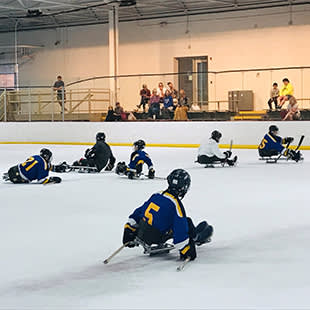
For an enhanced digital experience, read this story in the ezine.
Youth sports are a critical starting point in a person’s lifelong journey toward an active and healthy lifestyle. Children and teenagers who engage with sports not only grow up more physically active and confident, but also gain physical and mental health benefits that follow them throughout their lives.
Park and recreation professionals and their agencies are major providers of youth sports opportunities across the nation, serving all members of their communities. Equity is at the heart of access to youth sports. Unfortunately, there are significant disparities in who has access to youth sports.
Today, many park and recreation agencies face limiting funding challenges and stout competition with travel sports leagues and other providers that hinder equity in youth sports. The coronavirus (COVID-19) pandemic and resulting economic recession have greatly exacerbated these funding challenges, impeding park and recreation agencies’ mission to deliver low-cost youth sports programs to everyone.
In July 2020, the NRPA Research team asked park and recreation leaders about the current state of youth sports programming at their agencies. The 22-question survey queried about youth sports programs, focusing on agency partners, fee structures and activities that park and recreation agencies use to promote greater access.
Among the key findings is that relatively few park and recreation agencies “go it alone” when delivering sports opportunities for their communities’ youth. Instead, they develop and nurture partnerships with third parties. Common partners include:
- Private sports associations (52 percent of agencies)
- School systems (46 percent)
- Nonprofit organizations (42 percent)
Registration fees are a major source of funding for park and recreation agency youth sports offerings, with more than 9 in 10 agencies charging fees to sports participants. At the same time, registration fees may deter access to youth sports for many lower-income residents. One method that agencies use to expand access is offering reduced fees or discounts to lower-income residents.
Challenges to Delivering Youth Sports
Virtually all survey respondents report that their agencies struggle with challenges in their mission to deliver youth sports activities to all community members. Three in 5 park and recreation professionals report difficulty in recruiting enough volunteer coaches. Forty-five percent of survey respondents indicate their agencies lack a sufficient number of sports fields and courts. Nineteen percent of survey respondents report that their agencies need more administrative staff or resources, while 14 percent of agencies do not have sufficient funding to ensure fair and just access to high-quality youth sports.
Competition is another challenge faced by many agencies. Private-
sector sports leagues have the option to target anyone (e.g., by location and ability to pay registration fees). A park and recreation agency unable to successfully compete may find itself struggling to generate needed revenues. Among these competitors are:
- Private travel sports leagues (cited by 49 percent of respondents)
- Nonprofit community leagues (21 percent)
- School-affiliated leagues (21 percent)
Agencies have faced a wide spectrum of challenges due to the COVID-19 pandemic and resulting economic downturn, including budget cuts; restrictions on when, where and how groups of people can congregate; and training staff and volunteers on safe distancing practices. Ninety percent of park and recreation professionals report that the pandemic negatively impacted their agencies’ youth sports programming.
By centering sports programming around youths’ needs and laying a foundation for long-term participation, park and recreation agencies can help sustain engagement in sports and benefit the long-term health of our society. A mix of greater support — in the form of sustainable governmental tax support and the nurturing of partnerships — will ensure every member of our communities enjoy the many benefits of youth sports.
Kevin Roth is Vice President of Research, Evaluation and Technology at NRPA (kroth@nrpa.org).

